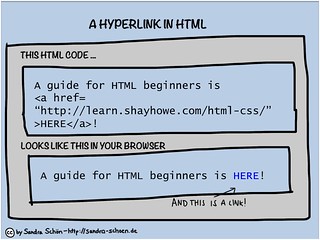
Literacy is no longer confined to a standard print format. There is an increasing integration and adoption of digital texts and ebooks in school libraries and classrooms across the United States. Compared to their print counterparts, ebooks are portable, facilitating the easy transport of sizable libraries with little physical effort. The mobility of ebooks allows them to be used in any place at any time via handheld or mobile devices.
Ebooks for young children are like storybooks we know and love in some ways. While features of ebooks mirror those we see in traditional children’s literature, ebooks add new, digital features. These digital additions to print are different in a manner that is profoundly changing the storybook as a piece of early literacy learning. As a result, ebooks can be used to develop transliterate practices in the classroom that address academic and cognitive diversity in learners. Read the rest of this entry…
none

The author Donald J. Sobol first published his adventures of boy super sleuth “Encyclopedia” Brown in 1963. All 29 books in this popular series presented the reader with a set of short mysteries, each including factual disparities somewhere within. Young readers were encouraged to read the text closely to try to identify the “slip-up” that breaks the case and then turn to the “Answers” section in the back of the book to verify their finding.
An important part of writing in digital spaces is the use of “hyperlinks.” In their most basic form, a “link,” or hyperlink is word, phrase or image on a Web page that instructs a computer to move to another relevant Web page. Much like Sobol’s “Answers” section linked readers to the facts that solved each case, hyperlinked writing provides links that are pertinent to a piece of writing on the web and help to strengthen the writing by providing direct access back to source documents and related materials for the writer’s audience. Read the rest of this entry…
none

Transliteracy is a concept that captures the field of literacy and describes language arts as more than a function of foundational skills, such as reading and writing, but also encompasses the ability to communicate across traditional and emerging platforms (Thomas, S. et. al., 2007). Simply put, transliteracy is the understanding of traditional literacy components alongside the nuances that living in a touchscreen world brings. Transliteracy puts aside the differences between traditional and emerging literacies to focus on the interconnected path of all literacies and the role they play in developing a literate member of society. Students need to become fluent, not only in their reading and writing practice, but also in the digital skills that are put to regular use in the world around them.
Reading and writing are at the core of transliteracy, as we interact with both traditional and digital print in our daily lives. Whether we are flipping through the pages of our favorite paperback or checking the weather on our smartphone, foundational reading skills (letter knowledge, sounds, and word reading) and meaning- based skills (comprehension, conceptual knowledge, and vocabulary) play an integral role. However, new skills, such as recognizing icons, setting up preferences, mastering multi-tap and swipe gestures, all play a pivotal role becoming a transliterate individual. Read the rest of this entry…
none
Even our youngest students expect learning spaces that seamlessly integrate digital tools, accommodate a mobile lifestyle, adapt to individual learning styles & encourage collaboration. The Google ecology provides the technological means to support this type of pedagogical approach, however, teachers must become develop a more complete understanding of mobile technology hardware, web-based software & OS. How does an elementary teacher incorporate the affordances of the Google ecology into meaningful learning? Join Dr. Jeremy Brueck as he highlights a variety of GAFE tools and Chrome extensions young children can use to tell their own stories, boosting reading and writing skills. Come discover new ways to use the Google ecology to support and enhance the reading and writing process.
none
This post is part of a fall semester course I am leading; Transliteracy in a New Participatory Culture of Learning (#UAtnpcl ). While it may not be relevant to all the readers of this blog (I’m sure there are about 3 of you) there may be something for you here.
[START POST]
I hope everyone is enjoying their weekend. I love the start of football season and our family has been busy taking in high school, college & NFL games the last few days. Hopefully all of you are taking some time to get in the last activities of the summer. Fall will be here before we know it!
Here’s your weekly update for our course.
Week 2 REWIND
Last week you should have navigated through the self-paced online content in both the “Watch These Videos” and “Read These Items” modules in Springboard. If you have not yet done this, please complete it soon. The materials there continue to help set the stage for our discussion of Transliteracy and what it means to be transliterate in our world. Outside of the videos and readings, there were several tasks for you to complete. These are listed below.
Create your blog
- Can be personal, professional or classroom
- Share an ABOUT ME post – In first post include: information about yourself, experience with teaching, technology, literacy, expectations for course, anything else you’d like to include. (videos encouraged, yet not necessary)
Create a Twitter account
- Follow @uakron_literacy, @brueckj23 and @djakes accounts
- Tweet using course hashtag #Uatnpcl – Tweet should share something you have learned about in the course so far. Could be an interesting observation, fact, or insight that will help us socially construct a mutual understanding of the changing dynamic of literacy and learning.
Complete Digital Communication Tools Form
Week 3 PREVIEW
This week you will continue to familiarize yourself with two essential transliteracy tools that you can use to begin to build your own professional learning network; Twitter and blogs. Some people have set up their accounts, while as of press time, other have not. It is essential to our learning experience to have these two items up and running. Because of this, I am going to step away from the syllabus schedule a bit and take the time needed to get everyone up and running at a reasonable comfort level. This means if you are an individual who has already completed the Week 2 items, you get a quick break this week. If you are an individual who still needs to complete this, take this week to knock it out. If you need assistance, please contact me and I will make sure you get the support you need.
Due to these schedule changes, we WILL NOT be holding a web conference session this week. We will meet on Blackboard Collaborate on September 17, 2013 from 6:50 PM- 8:20 PM. Use http://bit.ly/BrewWebConf to join the conference room. During that time we will talk in detail about Twitter chats and discuss the protocol for holding our course related Twitter chat.
none



